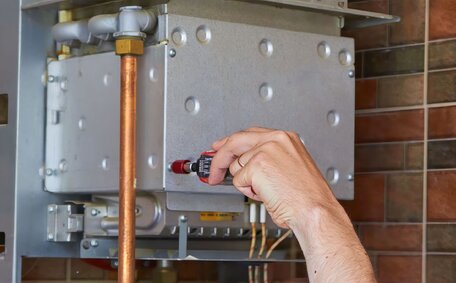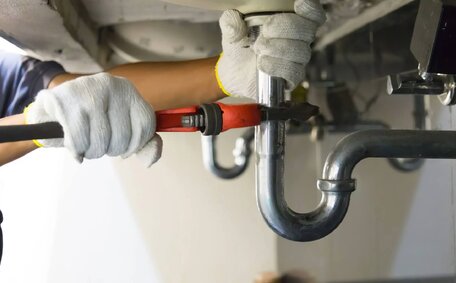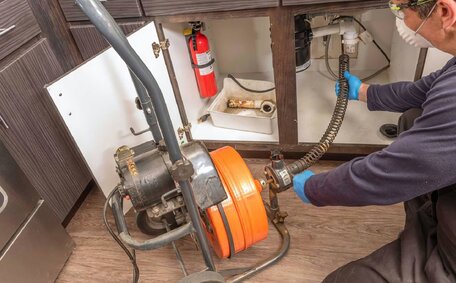How to Pet-Proof Your Plumbing
p>p>p>p>p>p>p>p>p>p>p>
Cover up Exposed Pipes
Exposed pipes around your home can become problematic if pets have access to them. Dogs and cats may chew, claw or damage exposed plumbing, leading to leaks, breaks or blockages. Pets can also unintentionally knock things into uncovered drains or fixtures.
To protect your plumbing, it’s advisable to cover any exposed pipes or openings. For example, you can use decorative covers, wire mesh or solid shields to prevent pet access underneath sinks, behind toilets or around any ground-level piping.
For drains, secure drain covers or grates over openings to prevent pets knocking debris into the pipes. Use sink and basin plugs when not in use. Keep toilet lids down to prevent pets drinking from the bowl or batting items into the water.
Exposed piping outdoors also needs protection. Use physical barriers like small fences or solid covers. Conceal plumbing behind purpose-built housing, or alternatively run pipes through PVC tubing or conduit.
Taking these simple steps helps safeguard your plumbing from inquisitive paws. Stopping pet damage early also prevents expensive repairs down the track.
Rinse Off A Dirty Pet
p>p>p>p>p>p>p>p>p>p>p>p>p>p>p>p>p>
Clearing Hair from a Blocked Drain
Pet hair is a common cause of household drain blockages. If you suspect your blocked drain is caused by dog or cat hair, there are some steps you can try before calling a professional.
First, see if you can remove any hair caught around the drain grate or stopper. Use tongs or needle-nose pliers to grasp and pull out hair. You may need to slowly work in a circular motion to wind the hair around the tool and withdraw it.
Try using a drain snake or auger. Try using a drain snake or auger. Repeat several times until no more hair comes up.
Carefully feed the end of the snake down the drain and twist it to grab hold of hair and pull it back up.
Plunging may also help dislodge a hair clog. Rapidly plunge up and down with a heavy-duty plunger to create pressure waves through the pipe.
For sinks, remove the curved P-trap underneath and clean out any hair trapped inside. Make sure to have a bucket ready to catch any drain water.
If these methods don’t solve the problem, call a professional plumber. They have specialised tools to clear severe hair clogs, and can also inspect your drains for any damage caused by excessive blockages.
Common household pets that can cause drain issues
Our furry friends can sometimes unintentionally cause issues with household drains. Here are some of the most common household pets that can contribute to clogs or blockages:
Dogs
Dog hair can easily get washed down drains and accumulate to cause clogs, especially in bathrooms.
Long-haired breeds like retrievers, collies and huskies tend to shed more. As dogs drink from toilet bowls, their hair also gets transferred to pipes. Chewed up toys or other items dropped down drains are also problematic.
Cats
Like dogs, cats can shed hair that winds up blocking bathroom and laundry drains. Fine cat hair can cling to pipes and accumulate over time. Cats also sometimes fish items out of toilets with their paws which may get flushed down.
Birds
Bird feathers, seed husks and cage debris that gets washed down drains can cause issues. Parrots and cockatoos are particularly prone to dropping feathers.
Rabbits
Rabbit fur from grooming can clog pipes, as can bedding material from litter trays. Hay and grass nibbled by bunnies may also end up down the drain.
Rodents
The shavings and fur of small pets like guinea pigs, hamsters and mice can create drain blockages if they get washed down. Their chewing habits can also damage exposed plumbing.
Being aware of how our furry friends can impact drains helps us take steps to prevent problems. Protecting and cleaning drains regularly, and contacting a plumber if issues arise, keeps everything flowing smoothly.
Fur and hair clogging drains
Pet fur and hair can easily lead to clogged drains in your home. As dogs and cats naturally shed, their loose hair can wash down shower and sink drains. Over time, built-up pet fur can create substantial blockages.
Long-haired dog breeds like golden retrievers, German shepherds, and huskies tend to shed more fur, as do long-haired cat breeds like Persians and Maine Coons. All that excess fur winding up in your drains increases the chances of obstructions.
To help prevent pet fur clogs, regularly groom dogs and cats to remove loose hair. Brushing frequently helps minimise the amount of fur ending up in your pipes. Bathe pets over a towel or outside if possible.
Use drain covers and screens to catch hair around plugholes and prevent it washing down. Clean these regularly to remove built-up fur. You can also try products like drain screens or covers with rubber bristles to block hair from entering your pipes.
Promptly removing hair from brushes and combs also keeps it out of drains. Disposing of the hair in the trash rather than rinsing it down the sink prevents clogs.
If you do experience a drain blockage caused by pet hair, don’t try clearing it yourself. Call a professional plumber who can properly remove the clog and safely clean out your pipes.
Pets damaging pipes and septic systems
p>p>p>p>p>p>p>p>p>p>p>p>p>p>
Preventing pet-related drain clogs
There are several steps pet owners can take to help avoid clogged drains caused by their furry friends:
Regular groomingFrequently brushing or combing your pet helps reduce loose hair around the house that could end up down the drain. Bathe pets over a towel to catch shed hair.
Use drain coversInstall drain covers or screens over plugholes and grates to catch hair before it enters the pipes. Clean them regularly to remove built-up hair.
Prompt cleanupImmediately throw away hair removed from brushes and combs instead of rinsing it down the drain. Clean pet beds, crates and play areas frequently.
Bathroom habitsKeep toilet lids closed and use sink and tub plugs when not in use to prevent pets depositing items in drains. Consider placing water bowls away from plumbing fixtures.
Litter careScoop litter boxes frequently and dispose of waste directly into the trash, not down the toilet. Use a litter mat to catch scattered litter paw prints.
Outdoor maintenanceEnsure septic tanks are securely covered and check exposed outdoor pipes for damage. Keep pets away from leach drains.
Professional assistancep>p>p>






